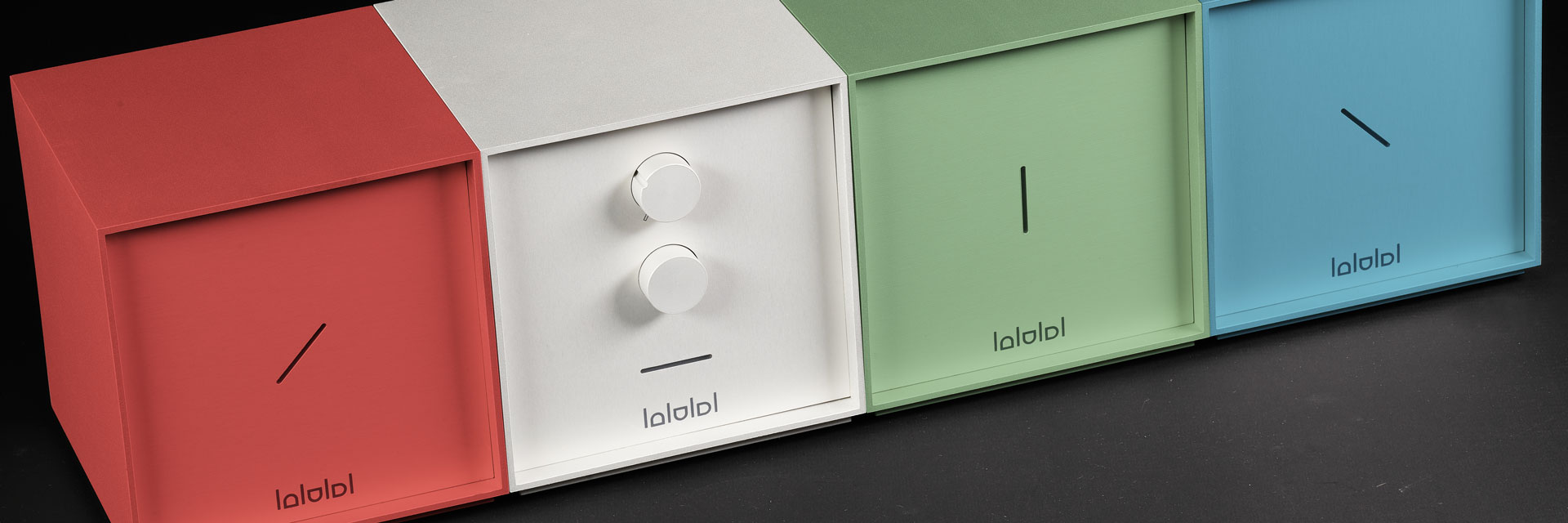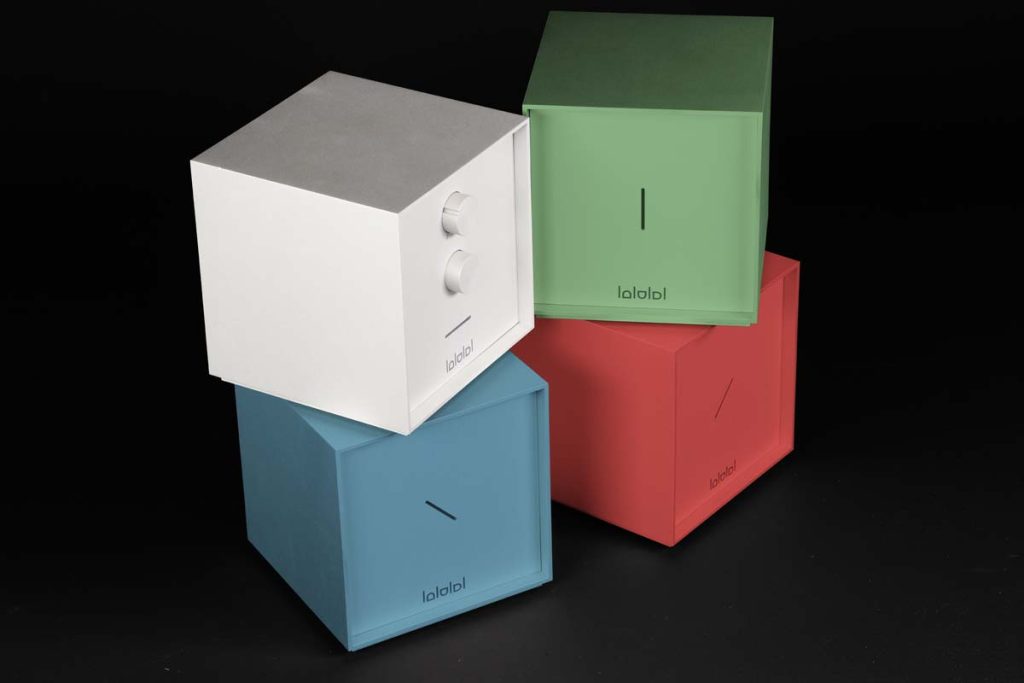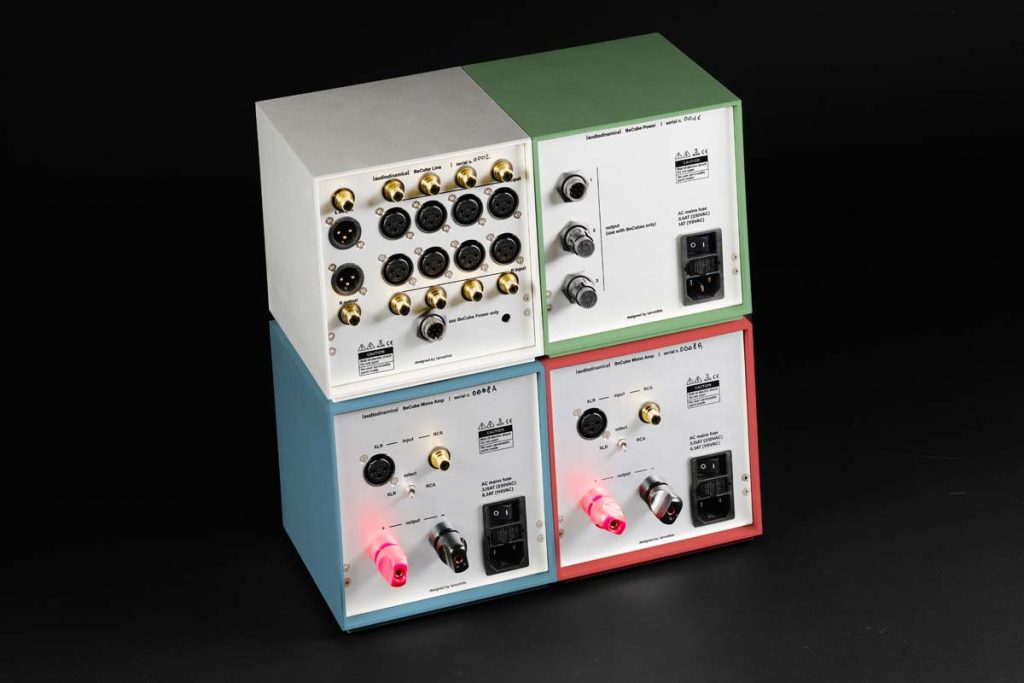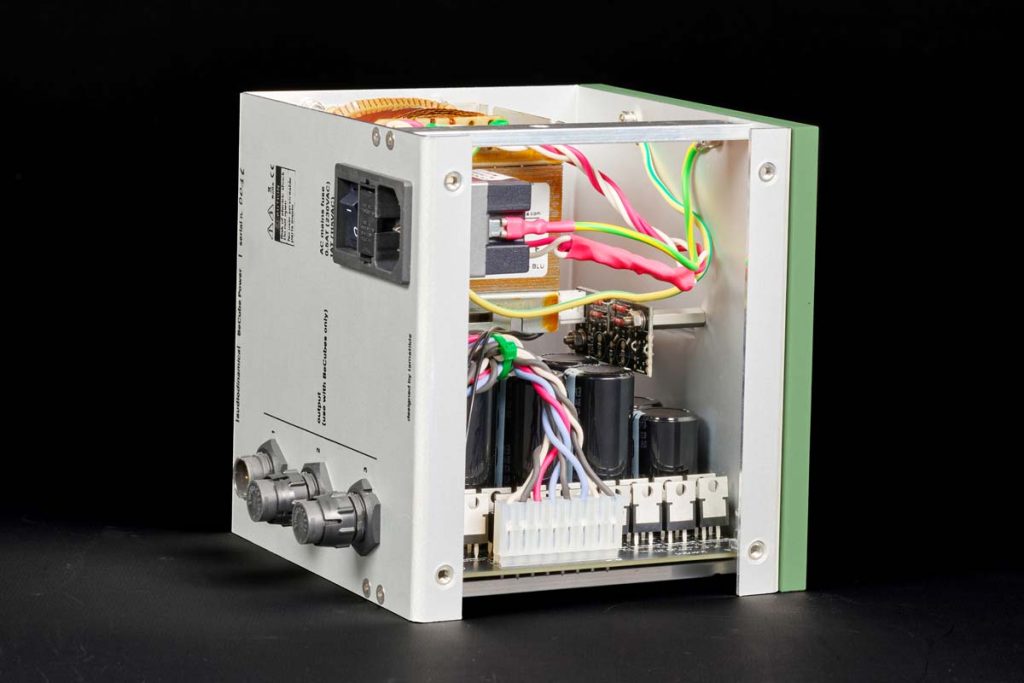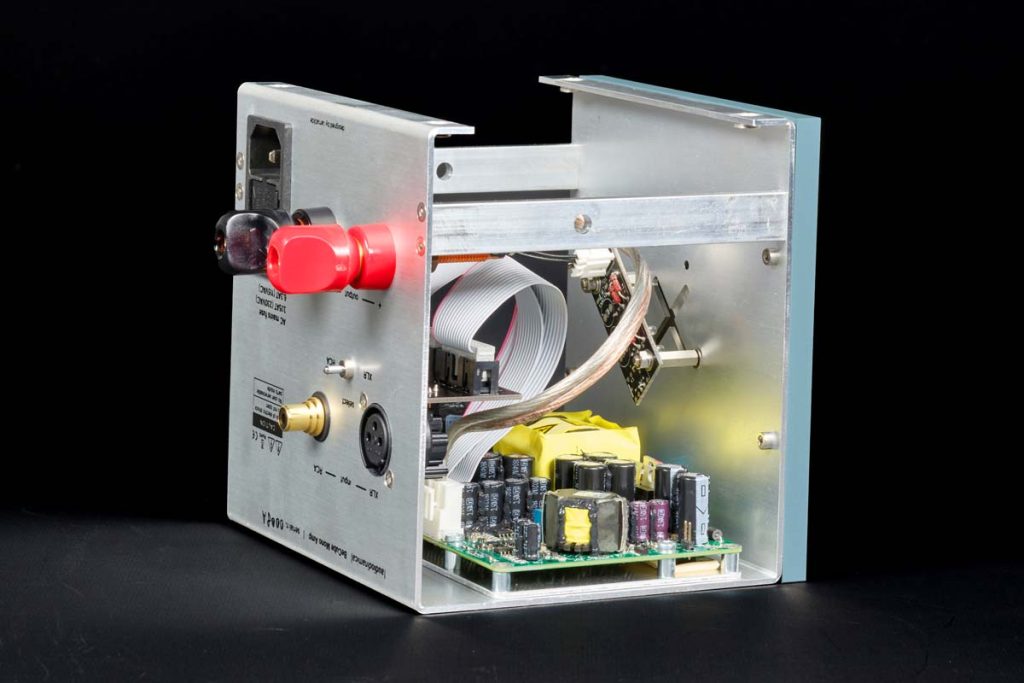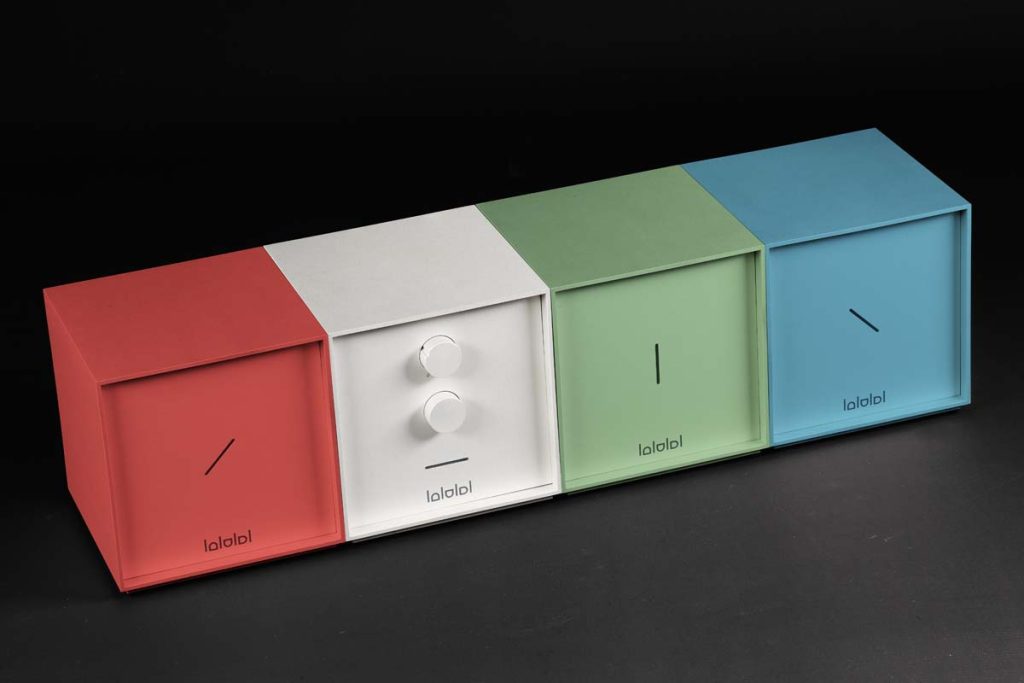Sonic bliss can be quite gray at times. The BeCubes, on the other hand, win every beauty contest – and make some big ones look pretty small.
Music reproduction is like chocolate: It makes you happy, but what it looks like doesn’t matter. And yet there is a type of chocolate that is explicitly advertised for its angular, square shape. Upscale listening pleasure can keep up with that, too: The Italian company Audiodinamica launches the BeCube preamp/monobloc combo, a series of components that are not only practical and good, but also quite square to boot.
HiFi and design: This is certainly a broad field, which – when it comes to a common living room furnishing – is often also discussed controversially. And those who are lucky enough to have their own listening room may uncompromisingly put auditory quality in the foreground and largely ignore the criterion of so-called “living room suitability”. There’s something to be said for that: A radio from Tivoli Audio may do a good job in the kitchen and look pretty. But when it comes to the right listening spot, good design is a bit suspect: Has the manufacturer paid enough attention to the components that are important for the sound, or is the appearance supposed to distract from the inner values?
This is actually different with the BeCubes. Audiodinamica presents itself as a start-up, whose team has a proven track record in engineering and electrical engineering. As befits a start-up, the team introduces itself on the website in a relaxed chatty tone, tells about musical preferences (and their favorite chocolate). Dieter Molitor of Live Act Audio appreciates the recently started collaboration: “They take care of every detail.” CEO Giovanni Germano outlines the mission this way: He used to screw together power amplifiers of all sizes in his parents’ basement, he says, from small pocket-sized formats to “big Class A amps that were almost indistinguishable from a home heating system.”
The difference between the BeCubes, on the other hand, is clear: The components of the product line measure just 15 centimeters square. The Audiodinamica BeCube Line preamplifier, the BeCube Mono mono power amplifiers and the BeCube Power power supply, which is also a stand-alone component, were available for testing. The latter can be used to power up to three components, which is an unusual but very plausible idea: It saves space in the individual components, reduces the cable clutter and eliminates interference. A headphone amplifier, a phono MC preamplifier and two MC transformers currently complete the series. A streamer, a DAC and a tube integrated amplifier are to be added later in the year.
This is not only a neatly sorted equipment park, but in view of the inner life quite a fighting statement. The small cubes are ready to outshine many larger and more expensive devices. There is not much space available for the assembly, so you need ideas and first-class components. The preamplifier is not discrete, but differential. On the transistor side, two jFETs are used per channel, which work symmetrically. Audiodinamica thus avoids the generation of noise in the signal processing.
The monolithic dual JFETs (manufactured by Linear Systems) allow space-saving circuits while delivering high accuracy. Four sources can be connected via XLR or RCA, which can be switched with a rotary knob below the motorized (!) level control – which is more fun than with an app anyway (still in development at the time of testing). The preamp then transmits, also via XLR or RC, to the two mono blocks – although with a weight of only three kilograms, you don’t really get the feeling that you’ve placed a “block” in the living room. The monos are built in Class D and deliver twice 130 watts into eight ohms. They have their own power supply, so you can leave them on while the other components are off.
The power supply is certainly the most unusual unit in this ensemble. It is only suitable for BeCube devices and, at four kilograms, is the “heaviest” component in the test system. T he transformer has several secondary windings and a low magnetic flux, so it can provide multiple output voltages and hardly generates any heat. Analog and digital output stages are separated, with power MOSFETs used in the analog. So you can expect a low noise level during voltage conversion. Like all BeCubes, the Power Cube is made of aluminum.
The housings consist of four individual elements that require only four screws to hold them together. The front panels can be exchanged and personalized by color or laser printing on request. If the color palette of silver, black, white, green, red and blue isn’t enough, the entire RAL palette of colors is available for an additional charge (around 100 euros).
The test system came in silver – and even in this classic finish, the BeCubes really make a statement. Not only does it look chic, but it really does look different from the usual setup and can also be arranged far more imaginatively when set up. Another visual highlight: the illuminated slot on the front, which sometimes runs vertically, sometimes crosswise, sometimes horizontally. The feel is consistently high-quality: Whether unpacking, connecting the terminals or in operation – the impression is always excellent, you feel that you are dealing with serious HiFi and not at all with a fashionable gimmick.
This becomes even more apparent when listening. Let’s open the door: The fact that Audiodinamica has stepped up to take on the real audiophile top dogs is not just a marketing promise. There is nothing to complain about. But let’s start skeptically and not dare to experiment for the time being: The album Breakfast In America by Supertramp does not make it too easy for playback chains: a lot of dynamics, partly considerable jumps, rich instrumentation from all kinds of instrument genres. The BeCubes show a well-balanced sound with plenty of poundage at the bottom and allow deep insights into the action. It is easy to hear how “Take The Long Way Home” is built up from the bottom to the top of the frequency spectrum. The first piano entry comes in like a bang, harp and piano are like two voices of a single instrument.
The chain does a good job of showing how they blend musically, but works them out tonally detached from each other. The syncopations in the bass are rhythmically wonderfully clear, and that the clapping of the hands in the solo part should be clearly audible as it is here is – sometimes one hardly believes it – not a matter of course.
Let’s make the task a little more difficult: “Karen With A C,” that punk rock with high cultural aspirations by The Buff Medways, is not necessarily considered to have a beautiful sound. This is intentional and required considerable effort in analog mastering: In the mids, the recording soon becomes cluttered, the ride cymbal has hardly any attack and consists only of high-frequency noise. This overwhelms some chains, it then rumbles and a tiring treble overkill shows up. Here it’s different: How wonderfully unpolished the drums are in the room! The sound is pleasantly saturated, nothing sets any limits to the distortion fun. Counter test with Stain by Living Colour, also brutally mixed, but there everything should still appear clear. Here, the BeCubes show the difference between CD and streaming in a fascinatingly clear way: they mercilessly reveal how the mix in streaming is reduced by overzealous algorithms.
Of course, it also works quieter: The mono blocks literally invite you to Miles Davis’ Kind Of Blue, on which sound engineer Fred Plaut shows what the then new stereo can do. Here, of course, the much too quietly recorded bass solo is of interest (recordings could not be edited afterwards): Even at room volume the lines are excellently traceable, the position of the instrument in the panorama doesn’t shift by an inch.
The surprise was a success: The Audiodinamica BeCube, these small, though not inconspicuous cubes make music in full size. Audiodinamica likes to compare the equipment of its components with the really, really big ones and orients itself to Vitus Audio or the Engström Monica – where there would be a considerable gap, at least in terms of price. But yes: The BeCubes are also completely convincing on the long haul, playing neutrally, but joyfully and highly dynamic – and completely fatigue-free. High end is affordable for once – and also really nice.
Accompanying Equipment
Amplifier: Creek Evo IA, TEAC AP-701 | Speakers: Neat Momentum 4i, Bryston Mini A, Focal Alpha 80 | CD Player: Creek Evo 2 | DAC/Network Player: Cambridge Audio CXN, TEAC UD-701N
Preamplifier
Audiodinamica BeCube Line
Concept: Preamplifier | Inputs analog: 4 x XLR/RCA | Outputs analog: XLR/RCA | Special features: motorized, 64-step relay volume control, front panel customizable | Finish: silver, black, white, green, red, blue | Dimensions (W/H/D): 15/15/15 cm | Weight: 3 kg | Warranty: 5 years | Price: around 3300 €
Power Amplifier
Audiodinamica BeCube Mono Amp
Concept: mono power amplifiers with Class D circuit | Power (8/4 Ω): 130/250 W | Bandwidth (-3 dB): 10 Hz to 50 kHz | Inputs analog: XLR/RCA | Outputs: XLR/RCA | Special features: Front panel customizable | Finish: silver, black, white, green, red, blue | Dimensions (W/H/D): 15/15/15 cm | Weight: 3 kg | Warranty period: 5 years | Pair price: around 3000 €
Power supply
Audiodinamica BeCube Power
Concept: external power supply | Power supply: 230 V/50 Hz | Special features: Front panel personalizable | Finish: silver, black, white, green, red, blue | Dimensions (W/H/D): 15/15/15 cm | Weight: 4 kg | Warranty period: 5 years | Price: around 1700 €
LIVE ACT AUDIO GmbH
Max-Planck-Straße 6
85609 München-Aschheim
Phone +49 171 4978785

